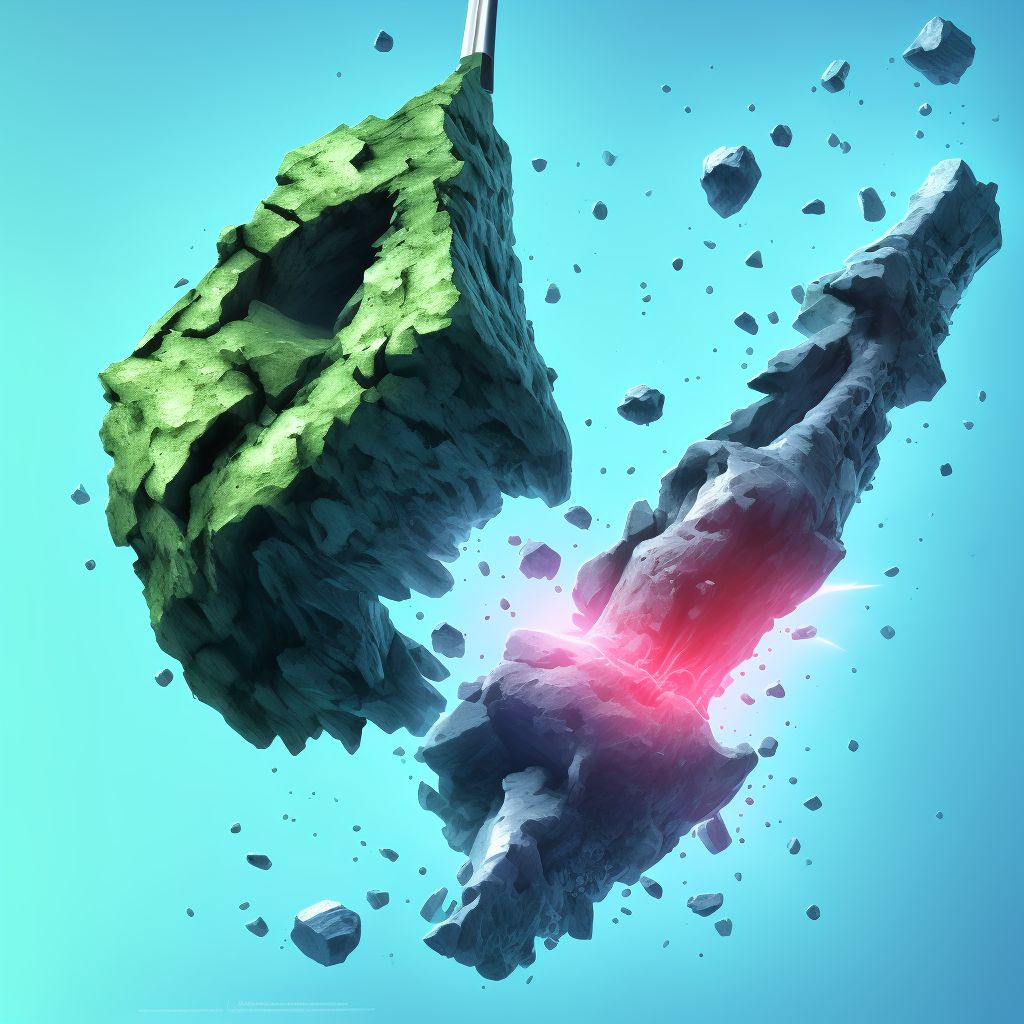
Unspecified fracture of shaft of unspecified tibia, subsequent encounter for closed fracture with nonunion Save
ICD-10 code: S82.209K
Disease category: S82.209: Unspecified fracture of shaft of unspecified tibia
Unspecified Fracture of Shaft of Unspecified Tibia: Understanding Subsequent Encounters for Closed Fracture with Nonunion
When it comes to bone fractures, one common condition that may occur is an unspecified fracture of the shaft of the unspecified tibia. This type of fracture refers to a break in the long bone located in the lower leg, specifically the shinbone. In medical terms, it is identified as an unspecified fracture since the specific type and location within the tibia are not specified.
After the initial diagnosis and treatment, subsequent encounters for a closed fracture with nonunion may be necessary. A nonunion refers to a situation where the fractured bone fails to heal properly within the expected timeframe. This can be a result of various factors, such as poor blood supply to the injured area, inadequate immobilization, or infection.
During subsequent encounters, healthcare professionals focus on monitoring the progress of the fracture and determining the best course of action to promote healing. These encounters may involve regular check-ups, diagnostic imaging, and assessments to evaluate the stability and alignment of the fracture.
Furthermore, non-operative treatments such as immobilization, physical therapy, and pain management techniques may be implemented during subsequent encounters. The goal is to encourage bone healing and prevent further complications.
- Immobilization: The use of casts, braces, or splints helps restrict movement of the fractured bone, promoting alignment and reducing the risk of further damage.
- Physical therapy: Once the initial healing process has begun, physical therapy exercises and techniques may be introduced to improve mobility, strength, and flexibility in the affected leg.
- Pain management: Managing pain is crucial during subsequent encounters. Healthcare providers may prescribe pain medication or recommend non-pharmacological approaches, such as ice packs or heat therapy, to alleviate discomfort.
It is important to note that the information provided here is for educational purposes only and should not be considered as medical advice. If you suspect you have an unspecified fracture of the shaft of the unspecified tibia with nonunion, it is essential to consult with a qualified healthcare professional for an accurate diagnosis and appropriate treatment plan.
In conclusion, subsequent encounters for an unspecified fracture of the shaft of the unspecified tibia with nonunion involve ongoing monitoring and treatment to promote bone healing. By following the recommended treatment plan and working closely with healthcare professionals, patients can improve their chances of a successful recovery.
Treatment of Unspecified fracture of shaft of unspecified tibia, subsequent encounter for closed fracture with nonunion:
Treatment Options for 'Unspecified Fracture of Shaft of Unspecified Tibia, Subsequent Encounter for Closed Fracture with Nonunion'
Dealing with a fracture can be a challenging and painful experience. When it comes to an unspecified fracture of the shaft of an unspecified tibia, subsequent encounter for closed fracture with nonunion, there are several treatment options available to ...
To see full information about treatment please Sign up or Log in